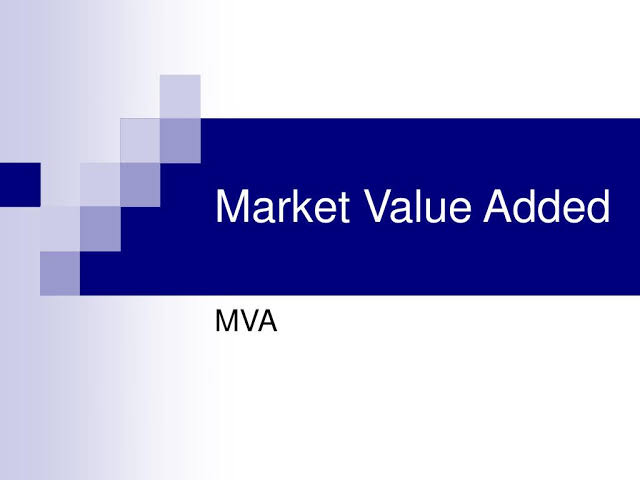Definition: Market Value Added (MVA)
- Posted on January 04, 2021
- Financial Terms
- By Glory

Market value added (MVA) is a financial term used to calculate and show the difference between a company’s market value and the capital raised by all its investors, including shareholders and bondholders. It can also be defined as the sum of all capital claims of a company plus its market value of debt and equity. MVA is similar to economic value added (EVA) which represents the net present value (NPV) of a series of EVAs.
Formula:
MVA = V – K
Where;
MVA is the market value added of the company
V is the market value of the company (including the value of debt and equity)
K is the total amount of capital investors put in the firm
Market Added Value Explained
Holistically, MVA is the total wealth a company can generate for its investors since its founding. When it comes to the valuation of a company, investors and lenders use different techniques, especially those that want to invest in a particular organization. Valuations help investors to determine whether or not a target company is worth the risk. Investors use two major valuation techniques: market value added (MVA) and economic value added (EVA).
Market value added (MVA), shows investors the difference between a company’s current value on the market and investors’ initial contributions. MVA is not classified as a performance indicator, rather it is a metric used in wealth measurement. Its calculation shows how much value a company has accumulated since its founding. For example, if a company has performed well over time, it means that it is profitable and has been retaining earnings which will encourage investors to increase their investments with hope for future earnings.
Economic value added (EVA), is an economic tool that is used to measure the real profits a company generates. In other words, EVA is used to determine how profitable a company is within a given period. The concept was formed by Stern Stewart & Co. EVA is calculated by subtracting the product of a firm’s initial capital and percentage cost of capital from the after-tax net profit.
Advantages of Market Value Added (MVA)
Attracts more investors: It is the goal of every investor to make profit on their investment returns. A company with a higher MVA is more appealing to investors compared to those with lower MVAs. It shows that a company is succeeding and healthy for investments, an indicator of future profitability and a high probability of profitable returns. A company with a high MVA is a good option for investors who are not necessarily interested in high-return investments.
Maintains the financial stamina of a company: A company with a high MVA has more potentials of remaining financially stable over an extended period. It is quite common to see a company generating billions of dollars in profit in one quarter and in declaring bankruptcy in the next quarter. A high MVA indicates that a firm is generating enough wealth and will continue to have investors invest more into it. This means that the company will have enough cash to expand its operations and become more profitable, staying ahead of its rivals.


Be the first to comment!
You must login to comment